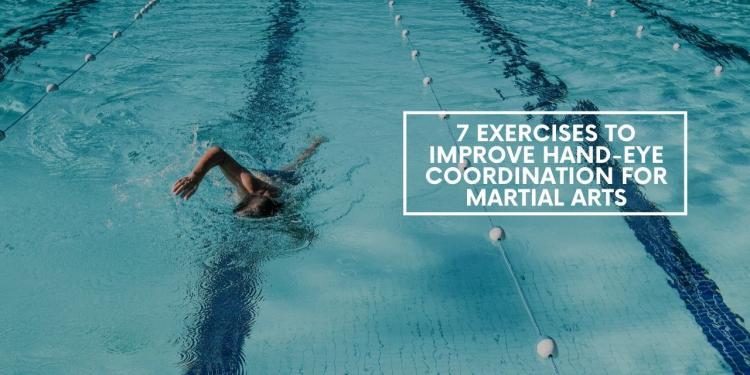We often focus on strength and brawn when it comes to our fighting and training, but there’s little use in power if it isn’t directed in a smart way. As you continuously build your muscular strength and endurance, don’t neglect strengthening your hand-eye coordination.
Hand-eye coordination is essential for a wide range of movements and positions, from parrying a punch while boxing to grappling in jiu-jitsu. It’s also integral for improving your overall timing when it comes to offensive and defensive reactions.
If you want to improve your hand-eye coordination in martial arts, in your gym routine and across all athletic pursuits, try these effective exercises.
7 Best Exercises for Improving Hand-Eye Coordination and Fine Motor Skills
1. Juggle
It’s not just for clowns or circuses! Numerous brain imaging studies have shown that juggling creates regional changes of the brain in areas related to visual motor perception. Juggling hones your hand-eye coordination while also letting you practice rhythm, timing and reaction, which you can then bring into your martial arts training.
If you’ve never juggled before, begin with only two balls and start with tossing them into the air in slow circles. Once you’re comfortable with your coordination and your pacing, you can add that crucial third ball.

Once all balls are in motion, you’ll find that you need to react without thinking, and allow your hands to move through space with fluid accuracy. Thus, juggling may boost proprioception, too.
Here is an excellent beginner's guide to juggling:
2. Double-end bag work
If you haven't tried drills with a double-end bag, you're missing out. A double-end bag is a small bag suspended by an elastic band from the ceiling, and also attached to the floor.
It's typically used by boxers but anyone who wants to enhance their eye-hand coordination will find it useful.
Due to its constant, unpredictable movement when you're punching it, a double-end bag lets you build up a faster and faster punching rhythm while also forcing you to adapt and move as the bag moves, thus directly training your hand-eye coordination.
Likewise, when it comes to proprioception, you also train your awareness of your fists, their strength and impact, and their movement.
Simply swap in a double-end bag instead of a traditional standing or hanging punching bag. It complements all forms of training, whether it’s North American boxing or even Muay Thai.
Check out the double-end bags we recommend
3. Wall ball drills
If you have a concrete or brick wall in your home or gym, wall drills build not only your hand-eye coordination, but also foot-eye coordination, cardiovascular endurance, and overall proprioception.
Using any sized ball that you find easy to catch, begin by tossing the ball against the wall with your left hand and catching it with your right hand. Alternate back and forth, getting used to this basic concept.
Then, begin to layer in complexities to work on your coordination. This includes:
- Moving closer to the wall
- Moving further from the wall
- Throwing the ball harder
- Catching the ball with the same hand that threw the ball
- Alternating between high hands and low hands when throwing/catching
- Throwing the ball to the side and lunging or sprinting to catch it
- Involving a partner to bring a level of unpredictability
4. Swimming
Swimming itself is an effective workout for building muscular strength, muscular endurance, and cardiovascular health, all which are essential for martial arts and overall athletic performance. But studies have also found that swimming is very beneficial for improving your fine motor skills, especially your hand-eye coordination.
Swimming may also increase your brain's volume, which directly improves your hand-eye and foot-eye coordination, too.
Consider adding swimming as a form of active recovery during your rest days. Unlike other forms of active recovery, such as walking or jogging, swimming lets you work on your coordination while also giving your body a break from regular training.
5. Speed bag drills
The goal here is to use a well-inflated boxing bag and work on hand speed. Sure, hand speed will boost your actual fighting performance. But increasing hand speed also means increasing hand accuracy, especially as you start to fatigue, which moves the focus onto your hand-eye coordination.
Start with small, lower-power swings, making sure you have full control as you hit the bag. Once you’re comfortable, you can try:
- Setting a time limit. Give yourself 60 seconds to hit the bag as many times as possible, then try and beat your record over the next few days/weeks as you train.
- Reduce the time limit, attempting to maintain the same number of crunches and the same level of control.
- Incorporate full-body movement, circling the bag in big or small circles while maintaining punching rhythm, speed and accuracy.
6. Basketball dribbling
Steal a page from basketball with a dribbling drill. But unlike in basketball, use a smaller ball, such as a tennis ball. The smaller the ball, the greater the erratic unpredictability of the ball’s bouncing motion and the more hand-eye coordination it requires.
Start by simply dribbling the ball between both hands, bouncing the ball off the ground. Then, pick up the speed. Once you’re feeling good with this, you can add:
- Step work. Try walking forward, backward or side to side while dribbling.
- Dribbling on a target. Try and dribble the ball on a specific spot on the floor. Slow down or speed up while maintaining accuracy.
- Dribble with one hand.
- Dribble while in a crouch position, or leaning over. Varying the height of the dribble improves overall body awareness.
Finally, don’t negate your actual eye health. As we age, our vision quality starts to deteriorate. Wearing sunglasses in the sun, getting high-quality sleep, eating a diet rich in antioxidants and omega-3 fats, and avoiding vision-deteriorating toxins like smoking can all help to protect your eyes.
7. Tai Chi
Although it is one of the worst forms of self-defense to practice, Tai Chi has a lot of other benefits. It is a form of martial arts hailing from China — may appear slow and gentle, but it brings fast benefits to the strength of your hand-eye coordination. In a recent randomized controlled trial published in the journal Disability and Rehabilitation, athletes who did tai chi improved their hand-eye coordination by 20 percent compared to those who didn't practice tai chi. This makes a lot of sense because tai chi is the practice of slow, controlled, and coordinated movements that allow your brain to connect different movement patterns.
Tai chi also enhances your balance and proprioception (your awareness of your body's position in space as your body moves), which carries additional benefits for martial arts.




